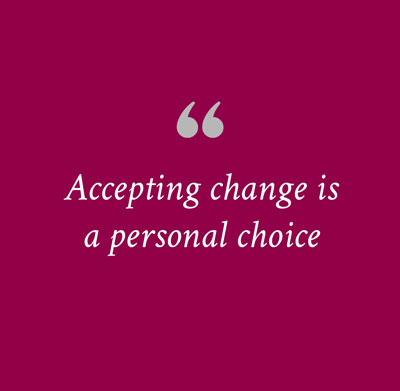
In a previous article, “CX – It Takes a Village,” we addressed five common obstacles to CX success: lack of ownership, support, and resources; organizational siloes; CX not seen as transformational; a one size fits all approach; and lack of connection to business outcomes. Another common pitfall of CX programs occurs when companies devote most of their resources to gaining executive-level buy-in but do little to engage employees. Accepting change is a personal choice. To initiate and sustain a CX culture, you need to understand the employee mindset and inspire your employees to want to change.
Are your employees ready for more change?

Employees continue to grow more resistant to change. To illustrate this point, a Gartner Workforce Change Survey in 2016 showed that 74% of employees were willing to change work behaviors to support organizational changes. This number significantly dropped to just 38% in 2022!
Change fatigue has a material impact on CX programs. Understanding the employee mindset is the best way to navigate and overcome potential challenges. An employee readiness assessment will provide important insight into your employees’ ability and willingness to take on change. This step is essential, as it tells you how hard you will need to work and where to focus your efforts. Furthermore, an annual or bi-annual survey will give you a view of overall adaptability and employee resilience over time, allowing you to adjust your approach as needed.
Focus on purpose
Learning is an effective way to alleviate frustration over change. CX education centers on educating employees about your customers, the organization’s CX vision, and their roles in fulfilling the vision. The education curriculum should be primarily designed to help employees understand what is expected of them and how to execute customer-centric behaviors. In our experience, a mandates and adherence approach will fall flat if your employees don’t see what’s in it for them.
To inspire employees, we design CX programs to start with the “why” and connect to a core cause — the higher purpose that drives your organization and everyone in it. By focusing on the core cause, employees can see the connection between the organization’s mission, the work they do, and their individual purpose. This human-centric approach allows you to tap into and nurture your employees’ acceptance of change by focusing on personal choice and impact.

The human-centric approach carries into CX education, where we include a curriculum of learning techniques to help employees become more resilient and adaptable. In addition to core CX principles, use CX education to teach employees about the changing business environment, how to shift their mindset and actions to practice Human Solutioning, and how to build lasting relationships. Regardless of their individual roles, your employees must emerge from CX education inspired and with a shared mindset that will drive continued collaboration toward achieving the organization’s CX vision.
In summary, devote time and resources to engage employees in your CX program.
Assess the employee mindset and use the insights to inform your program’s strategy, development, and activation. Resonate with employees by connecting to a sense of purpose and focusing on the impact they make through their work. Lastly, teach and inspire employees through CX education that empowers them with the tools and skills they need to make a difference for your customers, colleagues, and, most importantly, for themselves.
At ImprintCX, we’re passionate about employee-led CX transformations and have helped hundreds of brands develop and activate their programs. Let’s discuss how we can help you meet your education goals.